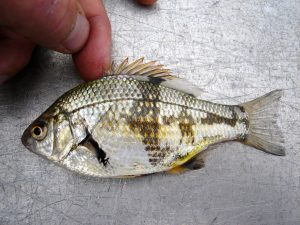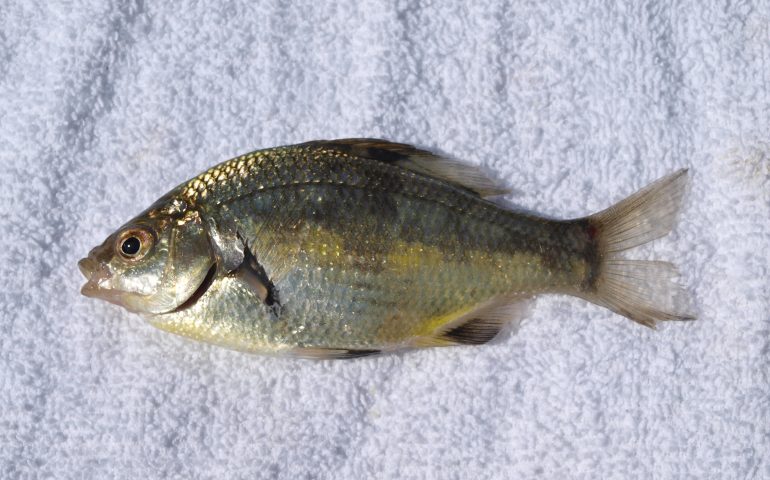Surfperches: Family Embiotocidae
Species: Micrometrus minimus (Gibbons, 1854); from the Greek words mikros (small) and metr (having a womb), and the Latin word minim (smallest). Family Embiotocidae, subfamily Embiotocinae.
Alternate Names: None that I have heard, although I have seen them mistakenly called shinerperch. In Mexico called mojarra enana or perca.
Identification: Typical perch shape. Dwarf perch have a compressed body; their longest dorsal fin spines are slightly longer than or same length as soft rays. They have a black triangle (crescent-shaped) at the base of the pectoral fin. Their coloring is silver with greenish blue reflections, and yellow on sides with dark stripes. The dorsal, anal, and pelvic fins usually have a black blotch.

Size: To 6.3 inches. Those caught from piers are normally 4-6 inches.
Range: Punta Baja (mainland) and Isla Cedros, central Baja California, to Salt Point, Sonoma County, northern California. Common from Bahia Playa Maria, central Baja California, to Sonoma County, northern California.
Habitat: Rocky shallow-water areas, among seaweed, and beds of eelgrass and surfgrass. Recorded to a depth of only 30 feet. Primarily feed on small crustaceans.
Piers: Although dwarf perch can be caught at most southern and central California piers, they are most common at piers in the San Francisco Bay Area. Best bets: Fort Point Pier, Fort Mason Piers, San Francisco Municipal Pier, Berkeley Pier, Port View Park Pier, Paradise Beach Pier and Fort Baker Pier.
Shoreline: Occasionally taken by shore anglers in central California.
Boats: A small, inshore species rarely taken from boats.
Bait and Tackle: These fish are sometimes taken on light tackle by anglers fishing for larger perch. Hook size number 8 and a small piece of bait, especially pile worm.
Food Value: Too small so throw ‘em back.
Comments: They are good striper bait.
